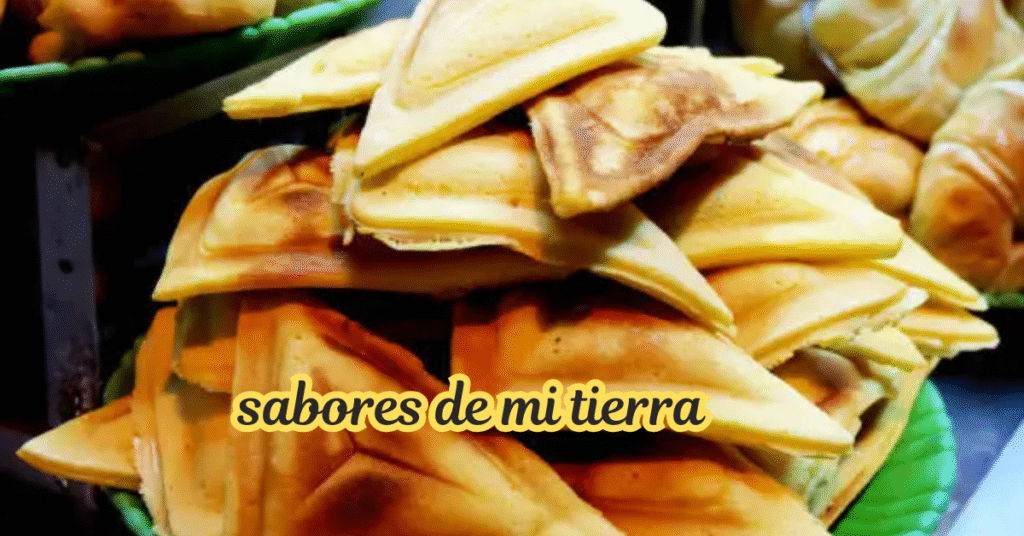Food is not only nourishment—it is also memory, identity, and a living archive of tradition. When people search for “sabores de mi tierra,” they are looking for more than recipes; they are seeking a map back to their cultural roots, a taste of authenticity that bridges generations. This phrase, translated as “flavors of my land,” encapsulates the essence of home, belonging, and the dishes that carry the stories of a community. Whether you are in Bogotá recalling arepas at dawn, in Oaxaca remembering the earthy aroma of mole, or in Miami longing for the comforting plate of arroz con pollo, the idea of sabores de mi tierra resonates universally. It is about rediscovering flavors that define not just food, but identity.
The Meaning Behind Sabores de Mi Tierra
To understand the phrase, one must look beyond literal translation. It suggests:
- Taste as identity: Flavors represent culture, ancestry, and regional distinctiveness.
- A link to home: A reminder of where one comes from, even when living abroad.
- Cultural preservation: Through recipes, families safeguard traditions from fading with time.
Unlike trendy culinary phrases, sabores de mi tierra is enduring. It is carried in handwritten cookbooks, whispered in kitchen instructions from grandmother to granddaughter, and rediscovered in restaurants that bring regional dishes into contemporary settings.
Culinary Identity and Memory
Anthropologists argue that food memory is one of the strongest forms of cultural recollection. One spoonful of a childhood dish can evoke images of family gatherings, celebrations, or even migrations. The flavors of one’s land are layered with meaning:
- Family bonds: Recipes cooked together strengthen intergenerational ties.
- Regional distinction: Each region boasts its own spices, cooking methods, and agricultural produce.
- Resilience of culture: Even when communities migrate, food remains a constant anchor to identity.
When we speak of sabores de mi tierra, we also speak of cultural survival.
A Table of Regional Flavors
To illustrate how sabores de mi tierra differ across landscapes, consider this table:
| Region | Iconic Dish | Flavor Profile | Cultural Meaning |
|---|---|---|---|
| Mexico (Oaxaca) | Mole Negro | Complex, smoky, chocolate-infused | Represents ritual, patience, and celebration |
| Colombia (Antioquia) | Bandeja Paisa | Hearty, savory, protein-rich | Symbol of abundance and hospitality |
| Peru (Lima) | Ceviche | Fresh, citrusy, vibrant | Connection to the ocean and coastal identity |
| Spain (Andalusia) | Gazpacho | Refreshing, tomato-forward, rustic | A summer staple tied to agrarian roots |
| Puerto Rico | Mofongo | Garlicky, plantain-based, filling | A blend of African, Indigenous, and Spanish heritage |
This table shows how flavors are not isolated—they are carriers of history, shaped by geography and migration.
The Emotional Power of Taste
Why does a simple dish trigger such profound emotion? The answer lies in the biology of memory. The olfactory bulb—responsible for smell—is directly connected to the brain’s limbic system, where emotions and memories are processed. That is why the aroma of sofrito simmering in olive oil or the smoky char of tortillas can transport someone instantly to childhood.
Sabores de mi tierra are not only tasted; they are felt. They are a dialogue between the body and the past.
Migration and Culinary Adaptation
As Latin American and Spanish-speaking communities migrated across the world, they carried recipes with them. Yet, ingredients often changed. Immigrants adapted dishes to what was available in their new homelands. For example:
- Cuban immigrants in Miami used local seafood to replicate island dishes.
- Mexican communities in Los Angeles blended traditional recipes with Californian produce.
- Spanish families in New York reinvented tapas using American markets.
Despite changes, the core remained intact: flavor as a cultural reminder.
Restaurants as Cultural Ambassadors
In many cities, restaurants named Sabores de Mi Tierra or variations of it have become spaces for cultural connection. They serve more than food—they offer belonging. For immigrants, walking into such a restaurant is an act of reconnection. For others, it is an invitation to experience authenticity beyond commercialized “Latin food.”
These establishments often prioritize:
- Home-style cooking over haute cuisine.
- Storytelling alongside serving.
- Ingredients sourced to match authenticity.
Flavors Across Generations
One of the greatest challenges facing sabores de mi tierra is generational shift. Younger generations raised abroad may prefer fast food or fusion over traditional dishes. Yet many find themselves returning to ancestral recipes later in life as a way of reclaiming identity.
Grandmothers and mothers play pivotal roles in safeguarding recipes. Oral tradition in kitchens ensures continuity. But modern tools—blogs, video tutorials, digital cookbooks—also help preserve these flavors for generations to come.
Festivals and Collective Memory
Food festivals centered on national cuisines are another way communities celebrate sabores de mi tierra. From street fairs in Queens serving empanadas to Colombian Day parades offering bandeja paisa, these events are not only culinary—they are communal affirmations of identity.
Festivals allow people to:
- Share recipes beyond the family circle.
- Teach children the cultural meaning of dishes.
- Recreate community through food.
Health and Nutrition in Traditional Foods
Interestingly, many traditional dishes tied to sabores de mi tierra carry wisdom about balanced nutrition. Before industrialization, meals were based on seasonal and locally grown foods:
- Beans and corn offered protein and carbohydrates.
- Herbs like cilantro, oregano, and epazote added not just flavor but medicinal benefits.
- Fresh fruits ensured vitamins and minerals.
Modern reinterpretations of traditional foods often highlight these health aspects, marrying heritage with contemporary wellness trends.
Global Influence of Sabores de Mi Tierra
What began as intimate family cooking has now influenced international gastronomy. Renowned chefs often look back to their roots for inspiration. Michelin-star restaurants in Madrid, Lima, or Mexico City frequently elevate humble home dishes into haute cuisine while preserving authenticity.
This global influence demonstrates the universality of sabores de mi tierra: no matter where you are, people seek connection through flavor.
Preserving the Future of Flavor
The future of sabores de mi tierra depends on conscious preservation. Without effort, globalization risks flattening culinary distinctions. Communities must:
- Document recipes through writing and media.
- Encourage younger generations to cook at home.
- Support restaurants and markets selling authentic products.
By doing so, they ensure flavors remain more than memory—they remain lived experience
Five Frequently Asked Questions
1. What does “sabores de mi tierra” mean?
It translates to “flavors of my land” and refers to the traditional tastes and recipes tied to cultural identity.
2. Why is food memory important in culture?
Food connects people to heritage, evoking memories of family, celebrations, and ancestral practices.
3. How do immigrants preserve their traditional flavors abroad?
They adapt recipes to available ingredients while keeping core techniques, ensuring authenticity survives across generations.
4. Are traditional foods healthier than modern diets?
Many traditional recipes use whole, local, and seasonal ingredients, offering natural nutritional balance compared to processed diets.
5. How can younger generations keep traditions alive?
By cooking family recipes, documenting them, participating in festivals, and supporting authentic culinary spaces in their communities.
Conclusion
Sabores de mi tierra is not a fleeting trend—it is a cultural compass. It guides individuals back to their roots, offering comfort, continuity, and belonging through flavor. Each dish holds memory, each spice tells a story, and each recipe safeguards identity against time and distance. Whether enjoyed in a bustling city or in a quiet family kitchen, these flavors are an inheritance worth cherishing, sharing, and preserving.







